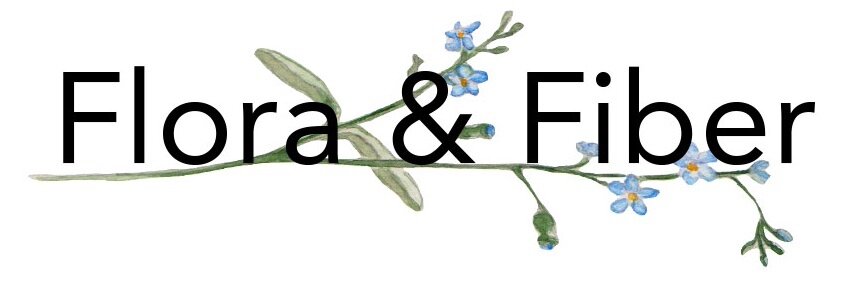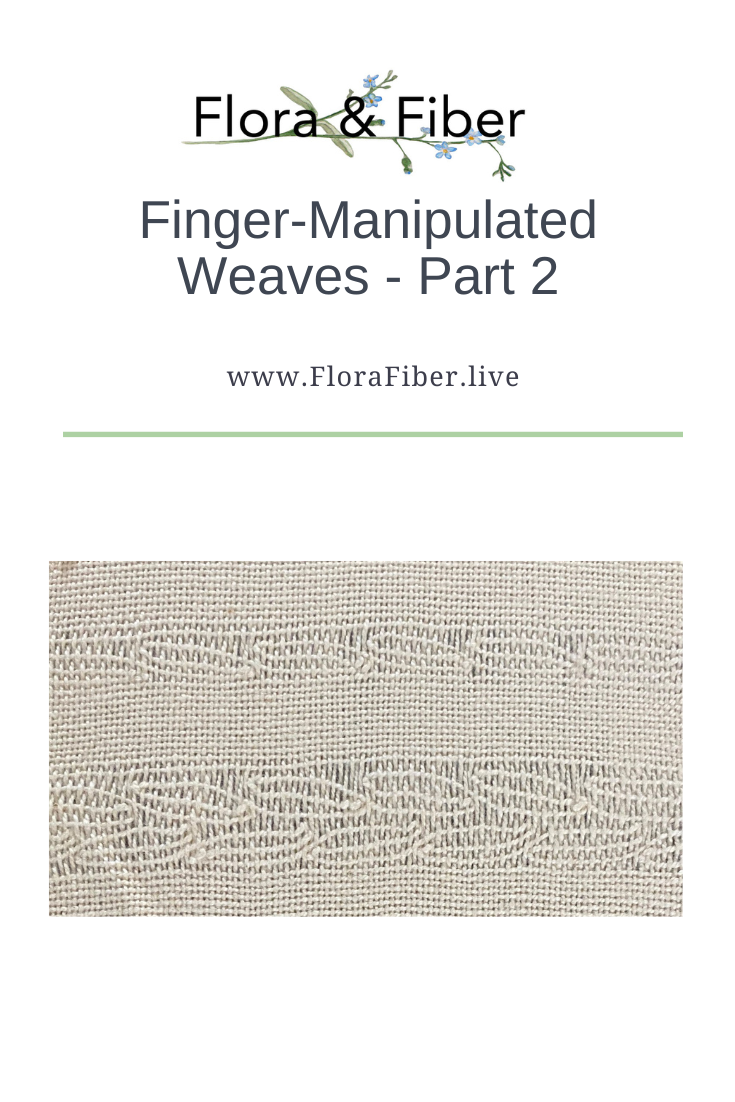Finger-Manipulated Weaves-Part 2
This post is the second offering for a series looking at finger-manipulated weaving techniques. The first post described the general attributes of these weaves and the methods of leno and Mexican lace. Today's post looks at Spanish Lace.
Spanish lace consists of rows of weft woven back and forth in small sections, typically in plain weave. Eleanor Best refers to Spanish lace as Spanish Stitch, while other sources call it Spanish Openwork Stitch. When the weft threads are drawn tightly, it is called Spanish Eyelet.
Samples
I wove these samples on a warp of 8/2 unmercerized cotton, natural (3360 yd/lb) at 20 epi. The warp is threaded as a straight draw and treadled as plain weave. The weft is 8/2 cotton unless otherwise specified.
Spanish lace forms by the weft crossing back and forth, in this case, over groups of ten threads.
In this sample, the return row of Spanish lace is staggered. Notice the shared weft thread angles differently depending on whether the groups are worked from the right or left.
Again, staggered Spanish lace but with a thicker weft (Lion Brand Fisherman’s wool, 935 yd/lb).
The weft is pulled tightly for Spanish eyelets to create holes in the warp. In this sample, the groups are stacked in succeeding rows creating a long slit. This weave produces a very stretchy fabric.
Here, rows of Spanish eyelets are woven with blocks of 8/2 cotton weft and a variegated novelty ribbon.
Spanish lace (green 8/2 cotton) combines nicely with other techniques, such as 2/2 leno (natural 8/2 cotton).
Spanish lace can be used as a border or filler between other finger-manipulated techniques. Below is an example of Spanish lace alternating with 1/1 leno blocks.
More Variations
vary the number of “rows” in each group
change the number of ends in each group
Lessons I Learned
The beat needs to be light to maintain a lacy effect.
It takes a careful beat to maintain the appropriate spacing when combining Spanish lace with other techniques. I've not mastered this yet.
I prefer this lacy design with the same color for warp and weft. As in knitted and crocheted lacework, variegated yarns tend to distract from the lace effect. Likewise, I prefer finer yarns than heavier yarns which, to my eye, creates a sloppy appearance.
Resources
Best, E. (2005). Lace by hand [free E-book available here]. great resource for all the finger manipulated lace weaves
Patrick, J. (2010). The weaver’s idea book. Interweave. Chapter 2 Finger-Controlled Weaves, 42-77.
Spady, R. (2021, MJ). Spanish Lace. Heddlecraft, 31-34.
In Part 3, we’ll look at Brooks Bouquet.
















